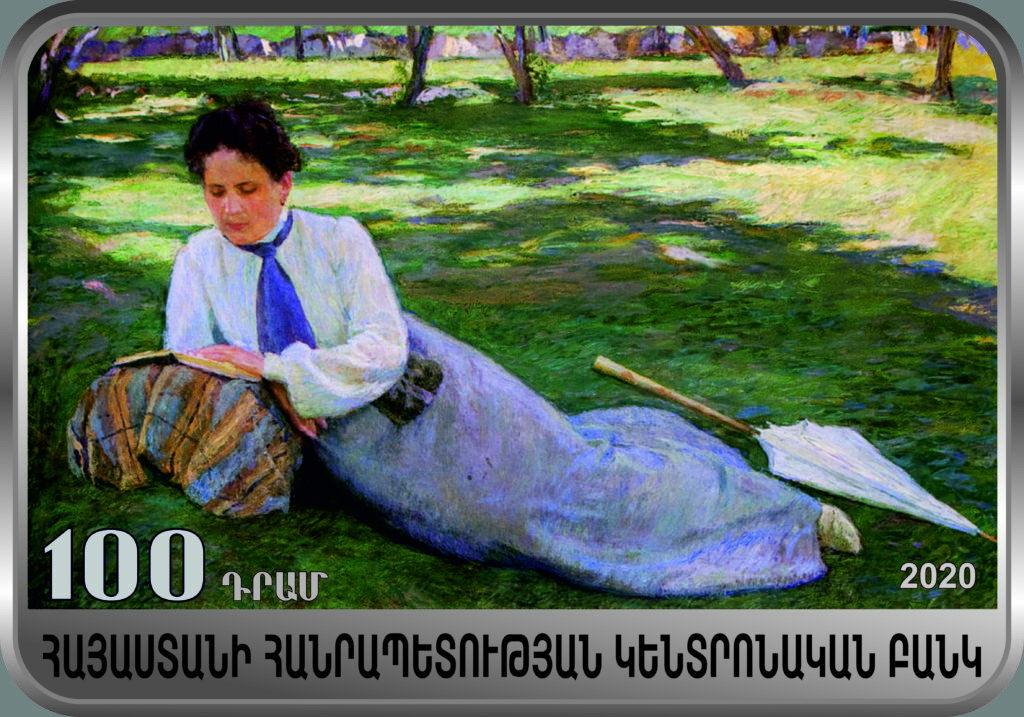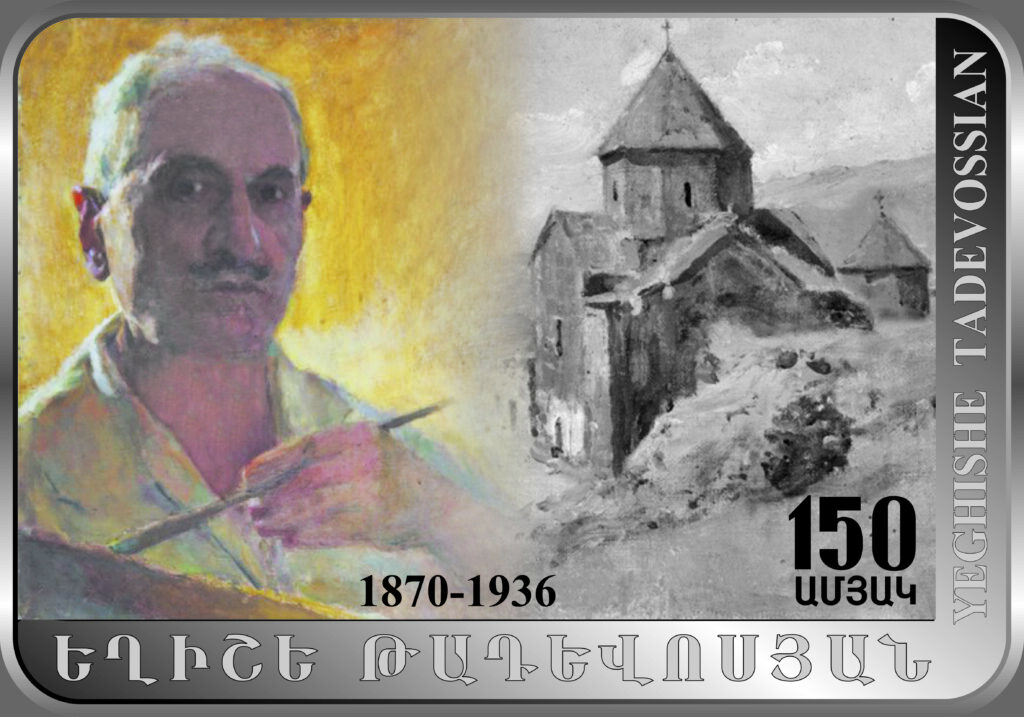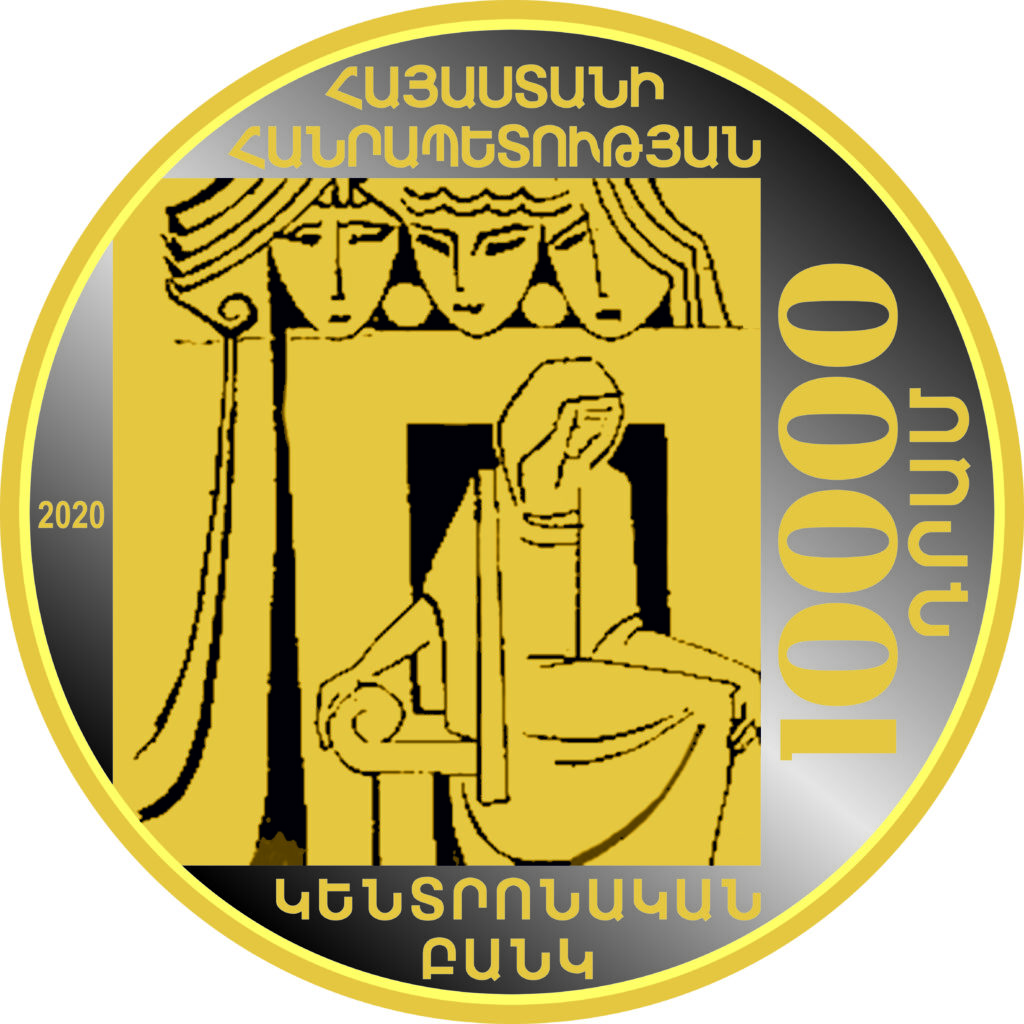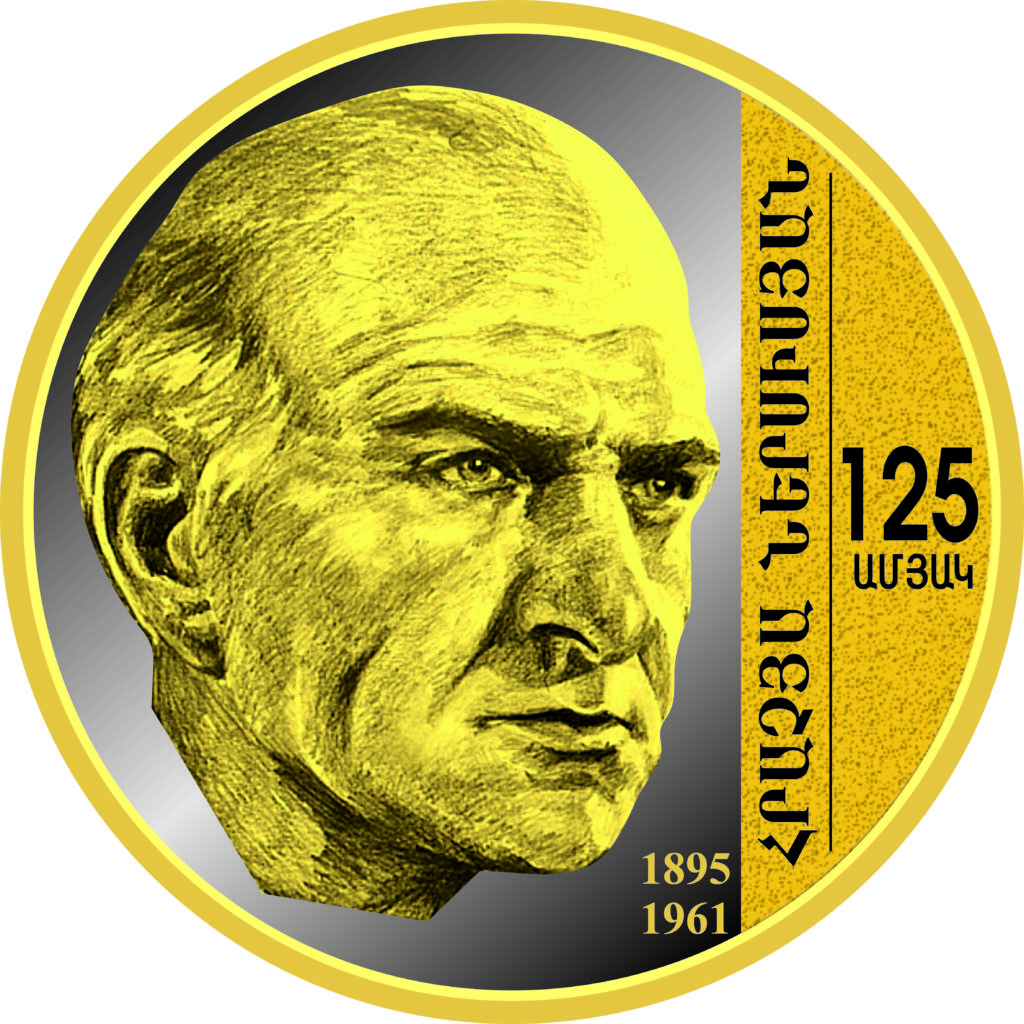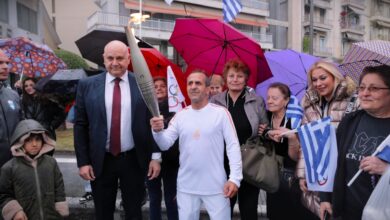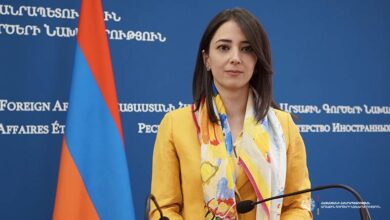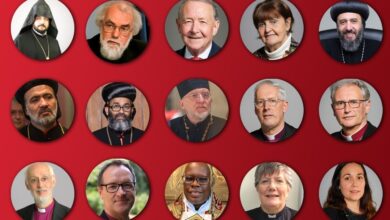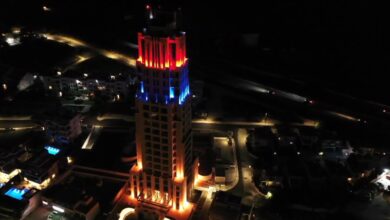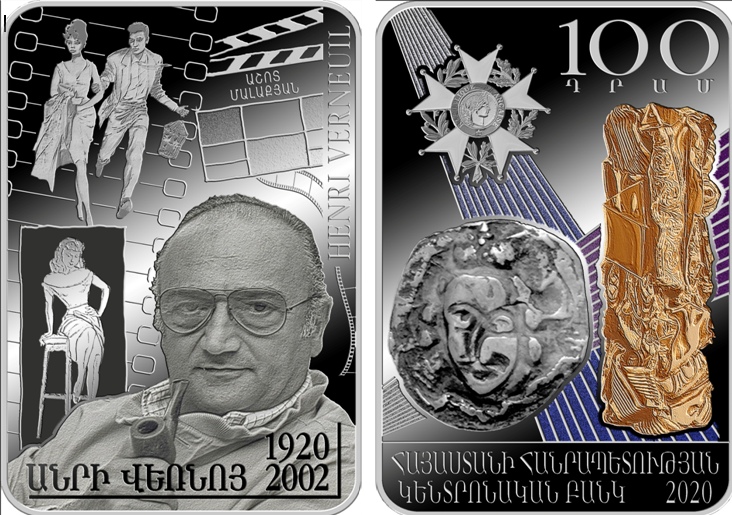
The Central Bank of Armenia has issued three collector coins dedicated to the 150th anniversary of the birth of artist Yeghishe Tadevossian, 125th birth anniversary of actor Hrachia Nersisyan and 100th birth anniversary of filmmaker Henry Verneuil.
Henry Verneuil- 100th anniversary of the birth
Henri Verneuil (born Ashot Malakian, 1920-2002), a French filmmaker of Armenian origin, a writer, a member of French Academy of Fine Arts. He studied at the Applied Art School in Marseilles, and then entered the École Nationale d’Arts et Metiers in Aix-en-Provence in 1942. After graduation, he worked as a journalist, then became editor of “Horizon”, an Armenian magazine.
In 1945, appearing as Henri Verneuil he published a series of articles on the Armenian Question in “La Marseillese”. Starting from 1948, Verneuil worked in cinema. He produced more than 40 films (“The Forbidden Fruit” (1952), “Maxim” (1958), “The President” (1961), among others, with the participation of world-class actors.
One of the best examples of contemporary cinematic art is Henri Verneuil’s “Mayrig”, a biographical film shot in 1991. It features the history of the Armenian family who survived the Armenian Genocide and migrated to France. In 1996, the film was awarded a César, and the script was translated and published into dozens of languages, becoming a credential for the adamant-like spirit and revival of Armenians.
Obverse: images of Order of the French Legion of Honor, Parajanov’s Thaler and Cesar prizes awarded to Henri Verneuil.
Reverse: a portrait of Henri Verneuil, a videotape and the fragments of the posters of the “Forbidden Fruit” (1952) and “It Happened All Night” (1960) films.
Designed by Eduard Kurghinyan
Minted in the Lithuanian Mint
Nominal value 100
Metal/alloy silver 9250
Weight 28,28
Size 28,0 x 40,0
Quantity 500
Edge even
Quality BU
Yeghishe Tadevossian – 150th anniversary of the birth
Yeghishe Tadevossian (1870-1936) is one of the well-known masters of Armenian landscape and portrait painting. He is an honored art worker of the Armenian SSR.
Tadevossian was born in Vagharshapat, Armenia. He studied at Ter-Hakobyan boarding house in Tiflis (1879-1881), Moscow’s Lazarian Seminary (1881-1885) and School of Painting, Sculpture and Architecture (1885-1894). He worked as an art teacher at the Gevorgian Seminary in Etchmiadzin (1894-1895). Tadevossian participated in many exhibitions in Yerevan, Tiflis and Moscow. In1916, he assisted in creating the Union of Armenian Artists, and was elected as its Chairman. He was one of the founders of the Georgian Academy of Art (1923) and one of its first professors.
Mainly a painter, Tadevossian exposed his talent in the field of graphics, applied arts, mosaic and sculpture as well.
Tadevossian’s first works speak of a profound sense of color and loyalty to classical traditions. The landscapes created by the artist are peculiar as they express freshness and lyricism (“Aragats”, 1917, “Ararat”, 1934).
Tadevossian is a brilliant portraitist. The painter’s mastery is shown in the early portraits(“A. Shirvanzade”, 1929, “H. Tumanyan”, 1933), and his last painting “Komitas”, 1935, boasts a prominent portraiture. As a contemporary of the rise of the Armenian national liberation movement, Tadevossian periodically referred to the past of the Armenian people (“Funeral Repast: Death of Artashes”, “Torq Angegh”, 1910, “Arshak and Parandzem”, 1921).
The works of Yeghishe Tadevossian are at the National Gallery of Armenia, Charents Museum of Literature and Art, the Moscow State Museum of the Oriental Art, and elsewhere.
Obverse: a fragment from Yeghishe Tadevossian’s “Justine, the painter’s wife” (1903) painting.
Reverse: fragments from Yeghishe Tadevossian’s “Self-portrait” (1933), “Araqelots Church on the Sevan Island” (Sketch, 1934) paintings.
Designed by Lusine Lalayan
Minted in the Lithuanian Mint
Nominal value 100
Metal/alloy silver 9250
Weight 28,28
Size 28,0 x 40,0
Quantity 500
Edge even
Quality BU
Hrachia Nersisyan – 125th anniversary of the birth
Hrachia Nersisyan (1895-1961) is a prominent Armenian actor, People’s Artist of the USSR (1956).
He received education at French and American Colleges, and at the Armenian Essayean College, Constantinople. Stage activity started as an actor in the Penklyan theater group. Starting 1919 he played at the theatre “Armenian drama” of Constantinople. In 1922, together with V. Papazyan, M.Janan and other actors, Nersisyan moved to Soviet Armenia and, starting 1923, he became a lifelong resident of Yerevan and an actor at the First State Theater (now the National Academic Theater after Sundukyan).
Nersisyan’s mastery and talent were fully revealed in his playing of Falstaff, Othello, King Lear (“The Funnier Women of Windsor”, “Othello”, “King Lear” by W. Shakespeare), Paghtasar Aghbar (“Paghtasar Aghbar” by H. Paronyan, Elizbaryan (“For the Sake of Honor” by A. Shirvanzade), Protasov (“Living Corpse” by L. Tolstoy), Mac-Gregor (“My Heart’s in the Highlands” by W. Saroyan). Since 1925 he has starred in films as Rustam (“Namus”, 1925), Pepo (“Pepo”, 1935), Davit Bek (“Davit Bek”, 1944), Ghambaryan (“Why the River is Making Noise”, 1958), Nerses Aghbar (“Tzhvzhik”, 1961).
Mastering the art of personifying with great ease and using a broader spectrum of means for expressing, Nersisyan could equally portray tragic, dramatic, and comical roles, while conveying deep emotional content. Nersisyan’s creative pathos is the compassion for the truly persecuted hero, which is emphasized in the artist’s recent roles.
Artistic profile, aesthetic value of art and emotional appeal has given Hrachia Nersisyan wide popularity.
Obverse:a fragment of the bas-relief on the memorial dedicated to Hrachia Nersisyan (author – Stepan Kyurkchyan).
Reverse: a portrait of Hrachia Nersisyan (author – Nerses Kirakosyan).
Designed by Lusine Lalayan
Minted in the Lithuanian Mint
Face value 10000
Metal/fineness gold 9000
Weight 8,6
Diameter 22,0
Quantity 300
Edge ribbed
Quality proof
Collector coins are made of precious metals and are issued to present to the society the national, international, historical and cultural, spiritual and other values of the country, to immortalize these values in the metal and to meet the demands of the numismatic market.
Like any other currency the collector coins have face value which makes them the means of payment. However, the face value of these coins is much lower that their cost price which includes the cost of the precious metal used for manufacturing of the coin, mintage and other expenses.
Low face value and high cost price allow these coins to be considered as the items of collection and not the means of payment used in money circulation. The collector coins have also the sale price set by the Central Bank of Armenia.
As the items of collection the collector coins are issued in very restricted quantities and are not reissued.
Numismatists, collectors and all interested persons can buy the Armenian collector coins in the sales salon “Numismatist” which is in the building of the Central Bank of Armenia and is open for everyone.


